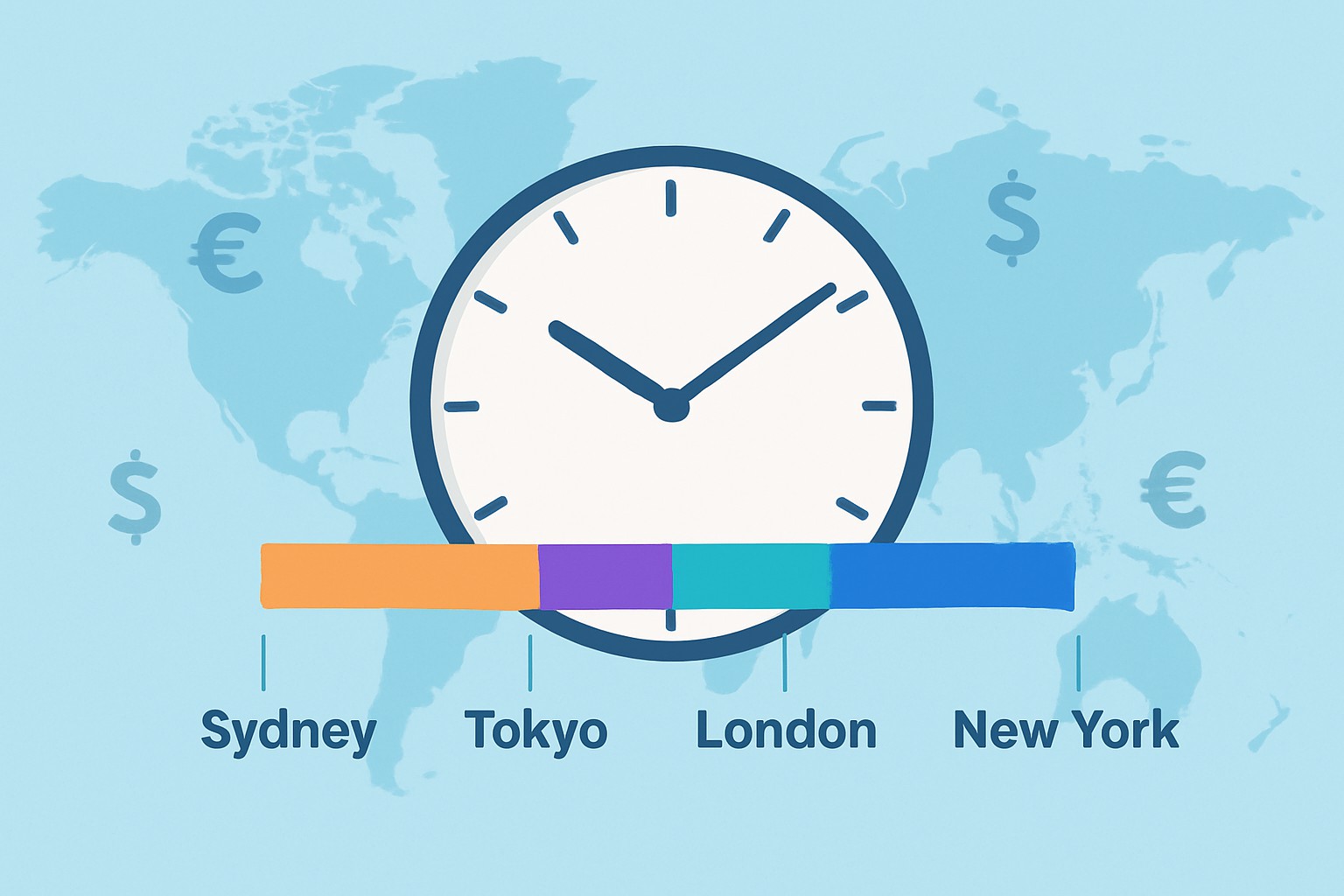
TrendSpider Forex vs Traditional Platforms
Discover how TrendSpider Forex revolutionizes currency trading through AI and automation compared to...

The forex market opening hours never take a break, running nonstop 24 hours a day from Monday through Friday—unlike stock markets that stick to set trading hours.
Forex market opening hours refer to the times when the major currency exchanges around the world are actively trading.
The forex market breaks down into four main trading sessions linked to major financial hubs across the globe: Sydney, Tokyo, London and New York. These sessions follow local trading hours and highlight the currencies that tend to be the busiest in each region. Sydney usually gets the ball rolling for the trading day followed closely by Tokyo then London and wrapping up with New York.
| Session | Location | Standard Opening Time (GMT) | Standard Closing Time (GMT) | Key Characteristics |
|---|---|---|---|---|
| Sydney | Australia | 22:00 | 07:00 | Kicks off the global forex day; usually quieter with lower volatility, but watch out for those key AUD pairs making their moves |
| Tokyo | Japan | 00:00 | 09:00 | The hub for Asian currencies like the JPY; liquidity tends to be moderate, keeping things interesting without too much drama |
| London | UK | 08:00 | 17:00 | Often the liveliest session, boasting the highest liquidity; major currency pairs get plenty of action, so buckle up |
| New York | USA | 13:00 | 22:00 | Ruled by the US dollar; overlaps with London’s session, which is when volatility really cranks up—traders love this bustling overlap |
Market opening hours definitely influence forex liquidity, volatility and trading volume. You’ll often see trading activity ramp up during session overlaps and in highly liquid markets. This can open the door to more opportunities.
"Volatility usually hits its peak during the hours when the London and New York sessions overlap, making it the prime time for traders hunting for fresh opportunities and ample liquidity. This window is like the golden hour for those wanting to ride the waves of market momentum and squeeze the most out of the action."
Session overlaps pop up when two major forex trading sessions are running simultaneously, usually stirring up more liquidity and a bit more volatility too. Traders tend to lean into these windows since tighter spreads and livelier price swings can really crank up the chances for profit.
Converting forex market opening hours from GMT or UTC to your local time is vital if you want to trade like a pro. I’ve found it’s best to rely on solid world clock tools or apps that take daylight saving changes into account. Remember that market hours shift with daylight saving time, usually around March and again in October or November. You’ll want to keep your trading schedule updated to stay ahead.
Currency pairs, commodities and indices tend to have their own moods. They shift gears depending on which forex market session is in play.
There are a handful of common misunderstandings about forex market hours that tend to trip people up. Some individuals believe the market never sleeps and runs 24/7 every single day, when in reality it takes a breather on weekends. Others assume the hours are uniform worldwide or that every currency is buzzing with activity all the time—which isn’t quite how it works.
It’s a good idea to align your strategies with the forex market opening hours. Concentrate on the high-liquidity sessions and those golden overlapping periods when the action really picks up. At the same time, try to avoid low-volume windows—that’s usually where slippage likes to sneak in. Planning your moves around major economic news releases is another savvy move.
Jump into trading during the big session overlaps when London and New York are both active. This is when liquidity peaks and spreads tighten, making your trades easier.
It’s usually best to avoid opening or holding positions during sleepy, low-volume periods like Sydney’s closing hours to prevent nasty surprises from sudden price swings.
Try to sync your trades with market openings because that’s when important economic news often drops, sparking fresh market moves right at the start.
Adjust your trading approach to match the unique rhythm of each session’s volatility and liquidity. This habit can help keep your results steady.
Watch out for daylight saving time changes. These shifts can quietly alter session hours and disrupt your trading schedule and risk management if you’re not careful.
27 articles published
With 20 years experience in commodity trading, Jasper provides insights into energy markets, precious metals, and agricultural futures with a focus on macroeconomic trends.
Read Posts
Discover how TrendSpider Forex revolutionizes currency trading through AI and automation compared to...

Discover a practical, step-by-step approach to start forex trading using essential tools like Tradin...

Discover how to trade forex for beginners with easy-to-understand concepts, step-by-step guides, and...

Timing is critical in Forex trading. Learn how to trade during peak market sessions and overlaps to...
27 articles published
23 articles published
20 articles published
